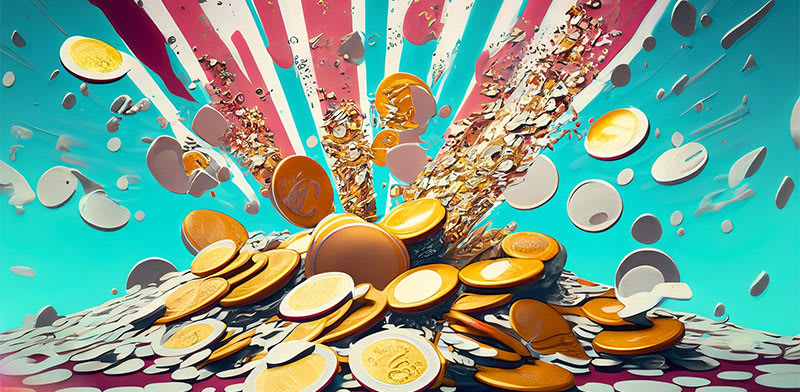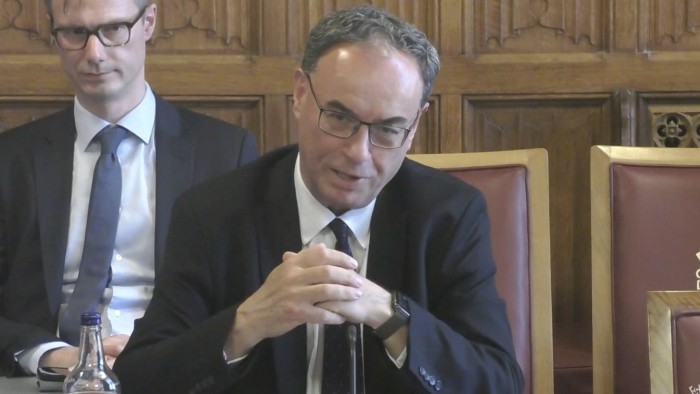
In the wake of Israel’s ceasefire with Iran, the strong appreciation of the shekel is continuing. In afternoon inter-bank trading the shekel-dollar rate is down 1.33% at NIS 3.398/$ and the shekel-euro rate is down 1.05% at NIS 3.94/€. The shekel has strengthened by nearly 5% against the US dollar since the beginning of the month and is trading at its strongest level since the end of 2022. Since the start of the month the shekel has strengthened by 3.6% and 5.4% against the euro and sterling, respectively.
The strengthening of the shekel against the dollar comes at a time when the US currency is slightly recovering against the world’s major currencies, after declining almost 9% since the start of 2025. In fact, in the past month the dollar has weakened against only 4 currencies, besides the shekel, which recorded the most significant appreciation – the euro and the currencies of Russia, Denmark and Switzerland.
Why is the shekel rising against the dollar?
The fall in Israel’s risk premium following the operation in Iran is behind the recent shekel appreciation. The military successes of the past week, which were reinforced by the US attack on the nuclear sites in Iran, has led to optimism among investors, which has also been reflected in increases on the Tel Aviv Stock Exchange (TASE), the strengthening of the shekel and a decrease in government bond yields, (which reflects a fall in the risk that investors are pricing in).
Bank Hapoalim chief financial markets strategist Modi Shafrir says, “In the run-up to the attack and at its beginning, when its results were not yet clear, we saw Israel’s risk premium increase. This was also reflected in the forex market with the dollar rising to NIS 3.7/$. But quite quickly, we saw over the past week how Israel’s risk premium fell. Since the markets began to price in a new Middle East, in which the Iranian threat is removed, and the geopolitical situation is improving.”
Along with the decline in the risk premium, there are also those who point to the resilience demonstrated on the home front, not only in recent events but throughout the war, as another factor that supported the increases in the markets and the shekel exchange rate against the dollar.
Bank Leumi markets strategist Kobby Levi says, “The resilience, adaptability and restraint that investors in Israel have learned to demonstrate after almost two years of geopolitical tensions and wars were reflected in the markets last week.”
Can the shekel-dollar rate fall below NIS 3/$
Looking ahead, the analysts say that, in addition to the expected decline in Israel’s risk premium, structural factors in the Israeli economy will continue to support the strengthening of the shekel. Thus, among other things, they point to the current account surplus, the economy’s bias toward exports, and foreign investment in Israel in industries such as high-tech.
These factors raise the question of whether the shekel could fall below the NIS 3/$ mark – something not seen this century. “In the long term, years ahead – I think so, but we are not close to there right now,” Shafrir estimates. Levi is even more cautious. “In general, the dollar could fall below NIS 3/$, but in such an uncertain environment, it is impossible to estimate.”
Levi recalls that in 2021 the dollar approached the NIS 3/$ threshold, but stresses that at that time “it was an event that mainly stemmed from the weakness of the dollar. We saw a strong shekel at the time, due to tech activity, which flourished in the post-Covid period, and due to foreign investments that flowed into Israel. It should be remembered that during that period, the Bank of Israel operated very significantly in the forex market, both in terms of interest rates and in terms of currency purchases. In other words, the Bank of Israel has a significant ability to offset and extend the duration of the shekel’s appreciation and make it gradual.”
Who are the players operating in the forex market?
There are quite a few dominant players in Israel’s forex market: foreign investors, speculators, and the biggest of all, according to estimates, are the institutional investors – the bodies that manage the investments of the Israeli public, such as investment houses and insurance companies. Similar to what happened on the TASE, the major players, led by the institutions, drew optimism from the decline in Israel’s risk premium and increased their exposure to it, including in the forex market. In this context, the increase in the purchase of Israeli shares and other assets in the country was also apparently supported by a reduction in forex surpluses, which also contributed to the appreciation of the shekel.
Beyond the investors themselves, there are quite a few forces that influence the shekel-dollar exchange rate, such as the interest rate differentials between Israel and the world. The fact that the interest rate in Israel stands at 4.5%, one of the highest in the world at the moment, plays in favor of the local currency.
The stock market also affects the shekel, and is known for its high correlation with developments on Wall Street and in particular on Nasdaq. As the US tech-biased index rises, the shekel strengthens against the dollar. The reason for this lies again with institutional investors. These are limited in their exposure to foreign exchange, and therefore when the value of their assets in major Wall Street stocks increases, they are required to balance the increase in the dollar component by increasing their exposure to the shekel, which strengthens the local currency.
Does the strengthening of the shekel bring an interest rate cut closer?
But is the strengthening of the shekel necessarily good news for the Israeli economy? By and large, yes. “A strong shekel is an indication of a strong economy,” explains Shafrir. “Beyond that, it is also good in that it moderates the inflationary pressures that are here. The strengthening of the shekel is a pretty necessary condition right now for the Bank of Israel to decide to lower the interest rate, because it also contains the decrease in the risk premium, which the Bank of Israel wants to see, and will also moderate inflation.”
However, Levy and Shafrir agree that it is too early to estimate when the Bank of Israel will cut the interest rate. “I don’t think that the change in the value of the shekel right now will have an impact on the interest rate,” Levi believes. “As long as this uncertainty continues, I estimate that the Bank of Israel will keep the interest rate stable. It is possible that in the main scenario, that this war really ends, then in the coming months there will be at least one interest rate reduction.”
Who are the big losers?
But not everyone benefits from a strong shekel. For quite a few Israelis, this is less good news. Anyone whose income is in foreign currency, whether in stocks and indices or real assets, loses from the strengthening of the Israeli currency, such as exporters or many dual-currency companies (traded both on Wall Street and in Israel).
Even those who decided to increase their investment portfolio exposure to foreign stock indices or bonds denominated in dollars (or in other currencies that have strengthened against the shekel), lose from the shekel’s appreciation. Thus, anyone who bet on the leading US index, the S&P 500, will have to give up part of their returns when converting dollar assets into shekels. The US index has attracted a large number of Israelis and in the provident fund sector, it represents about 8% of the funds.
Published by Globes, Israel business news – en.globes.co.il – on June 24, 2025.
© Copyright of Globes Publisher Itonut (1983) Ltd., 2025.






